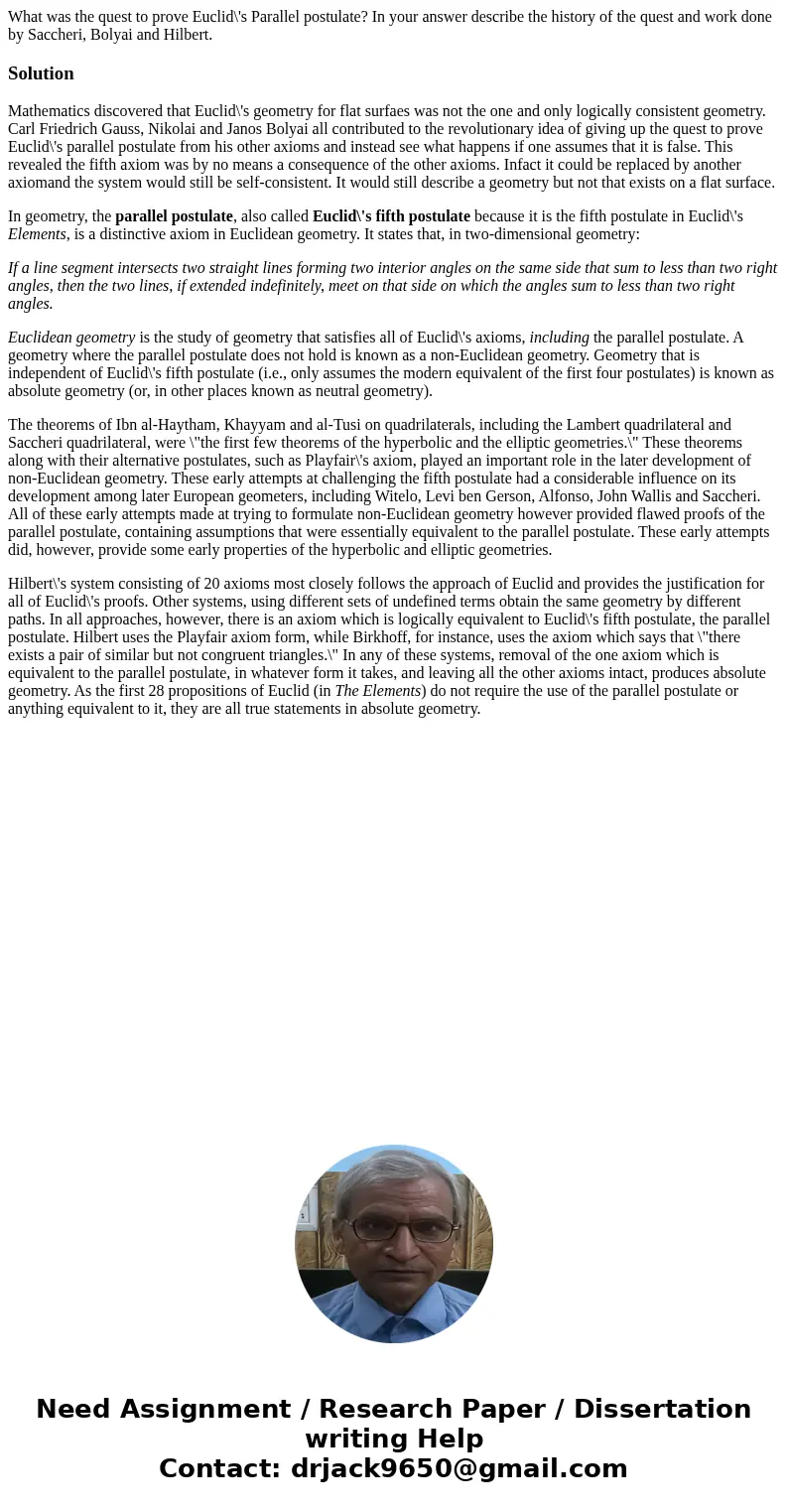What was the quest to prove Euclids Parallel postulate In yo
Solution
Mathematics discovered that Euclid\'s geometry for flat surfaes was not the one and only logically consistent geometry. Carl Friedrich Gauss, Nikolai and Janos Bolyai all contributed to the revolutionary idea of giving up the quest to prove Euclid\'s parallel postulate from his other axioms and instead see what happens if one assumes that it is false. This revealed the fifth axiom was by no means a consequence of the other axioms. Infact it could be replaced by another axiomand the system would still be self-consistent. It would still describe a geometry but not that exists on a flat surface.
In geometry, the parallel postulate, also called Euclid\'s fifth postulate because it is the fifth postulate in Euclid\'s Elements, is a distinctive axiom in Euclidean geometry. It states that, in two-dimensional geometry:
If a line segment intersects two straight lines forming two interior angles on the same side that sum to less than two right angles, then the two lines, if extended indefinitely, meet on that side on which the angles sum to less than two right angles.
Euclidean geometry is the study of geometry that satisfies all of Euclid\'s axioms, including the parallel postulate. A geometry where the parallel postulate does not hold is known as a non-Euclidean geometry. Geometry that is independent of Euclid\'s fifth postulate (i.e., only assumes the modern equivalent of the first four postulates) is known as absolute geometry (or, in other places known as neutral geometry).
The theorems of Ibn al-Haytham, Khayyam and al-Tusi on quadrilaterals, including the Lambert quadrilateral and Saccheri quadrilateral, were \"the first few theorems of the hyperbolic and the elliptic geometries.\" These theorems along with their alternative postulates, such as Playfair\'s axiom, played an important role in the later development of non-Euclidean geometry. These early attempts at challenging the fifth postulate had a considerable influence on its development among later European geometers, including Witelo, Levi ben Gerson, Alfonso, John Wallis and Saccheri. All of these early attempts made at trying to formulate non-Euclidean geometry however provided flawed proofs of the parallel postulate, containing assumptions that were essentially equivalent to the parallel postulate. These early attempts did, however, provide some early properties of the hyperbolic and elliptic geometries.
Hilbert\'s system consisting of 20 axioms most closely follows the approach of Euclid and provides the justification for all of Euclid\'s proofs. Other systems, using different sets of undefined terms obtain the same geometry by different paths. In all approaches, however, there is an axiom which is logically equivalent to Euclid\'s fifth postulate, the parallel postulate. Hilbert uses the Playfair axiom form, while Birkhoff, for instance, uses the axiom which says that \"there exists a pair of similar but not congruent triangles.\" In any of these systems, removal of the one axiom which is equivalent to the parallel postulate, in whatever form it takes, and leaving all the other axioms intact, produces absolute geometry. As the first 28 propositions of Euclid (in The Elements) do not require the use of the parallel postulate or anything equivalent to it, they are all true statements in absolute geometry.

 Homework Sourse
Homework Sourse